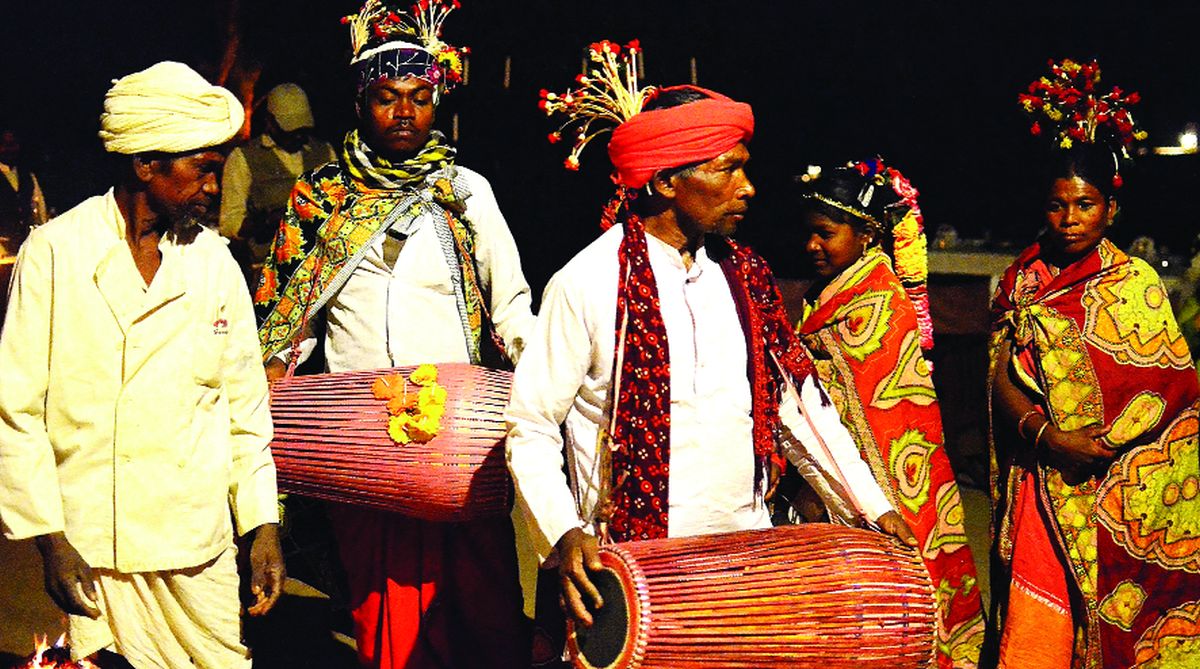I am always sorry when any language is lost because languages are the pedigree of nations.
~ Dr Samuel Johnson
Advertisement
Things have deteriorated considerably since his time and linguists estimate that by the end of the 21st century , over half of the world’s languages will have been lost. Many of them will be lost without yielding the linguistic secrets they may hold. Linguists are understandably concerned that such a valuable part of human culture should disappear without a trace. Scholars have published an Atlas of the World’s Languages in Danger of Disappearing.
According to the 1961 census , India had 1,100 “living languages” but there has been a steady decline in their number since then. In their study “People’s Linguistic Survey of India”, the Bhasha Research and Publication Centre in Vadodara has recently revealed that the last 56 years have seen the death of 250 languages. Still more unnerving is that the study foresees the demise of another 400 languages in the next 50 years. In spite of so many people speaking Gondi, the language of the Gonds in Madhya Pradesh, Gujarat, Telangana, Maharashtra, Chhattisgarh and Andhra Pradesh, it is in the ‘vulnerable’ category in Unesco’s Atlas of the World’s Languages in Danger.
The Unesco list has described Manipuri (Meitei), the Karbi language of Assam and the Khasis in Meghalaya as endangered languages. There are many languages that are spoken by less than 10,000 people in Arunachal Pradesh. In the Andaman and Nicobar Islands, Onge is spoken by nearly 100 people and Shompen by around 200. The risk of extinction is high. While certain languages such as Pali and Ahom have already become extinct, most of the tribal languages are in danger. These include Saura and Kui in Odisha, Aiton in Assam, Zakhring in Arunachal, Yakha, Koda and Kharia Thar in Bengal, Vishavan and Thachnadan in Kerala, Sunam in Himachal Pradesh , Ralte in Mizoram and Phudagi in Maharashtra. Jad, a tribal language in Uttarakhand, is virtually extinct. Koro, spoken by around 1,000 people in Arunachal, is facing extinction as the younger generation prefers to interact in either Hindi or English.
Early in 2010, a member of the Bo tribe died and with him the tribe’s native language met its eclipse.. During the 1961 census, two dialects ~ Mita and Ksarwar ~ were reported in West Bengal. These were spoken by one person each. The dialects are now presumably extinct. The phenomenon is not uniquely Indian; around the world, languages die at the rate of one every few weeks. The distressing feature is particularly evident in America and Australia, where hundreds of aboriginal languages are extinct. Many more are on the decline in Asia and Africa. In Europe, a large number of languages are in danger, the main reason being the pressure from dominant languages ~ English, French, German, Russian, Spanish and mainstream Chinese. Murrinh Patha and Mati Ke. The languages of aborigines in Australia’s Northern Territory have barely a few thousand speakers. Yuchi, the language of an American Indian tribe in Oklahoma, is faced with a similar predicament. The number of fluent speakers can be counted on the fingers. Manx has been declared as ‘’formally ended’’ after the death of its last native speaker. Languages such as Mohawk, Bodo, Yiddish and Provencal have been revived as part of a resurgent nationalist agenda of its speakers.
Researchers have mapped the hotspots from where languages are disappearing most rapidly ~ eastern Siberia, northern Australia, central South America, Oklahoma and south-west United States and the US-Pacific Northwest. The language of the Middle Chulym , descendants of nomadic Tartars who once lived by hunting, fishing and gathering in the forests of western Siberia, is now spoken fluently by only a handful of people.
Linguistic experts estimate that 96 per cent of the world’s languages are spoken by four per cent of the world’s population .At least 80 per cent of the African languages have no orthographic. Bunuba, an Australian aboriginal language, has no more than 100 speakers left. Ainu is a moribund language and has been endangered for the past few decades. Similarly, certain languages are on the verge of extinction in places where aboriginals still live ~ Australia and New Zealand . Aka-Jeru is a Great Andamanese language, but there is some dispute as to whether or not Jeru is extinct. Some of the extinct languages in Europe are Kemi Sami, southern Mansi, Polabian and Slovancian, while some of the potentially endangered languages in the continent are Piedmontese, Ligurian, Lombard and Corsian.
The genetic basis of language grammar has been a subject of discourse ever since the suggestion was advanced by Noam Chomsky in the 1950s, and also by Stephen Pinker in his book, The Language Instinct. Only after the study of several languages can it be concluded whether there are universal rules of grammar, which would indicate that it is under the control of genes rather than culture. It is generally agreed that more than half of the world’s languages have no written form. With the death of the last speaker of many of these, these languages will be extinct. And the loss will not be merely in terms of diversity but of knowledge itself. Obviously, globalisation is hastening the death of many more minor languages which may prove to be increasingly useless for materialist purposes. The other factors are the increasing political and cultural intolerance of minorities by governments, and the spread of new media forms, notably the Internet. The primary factor in most cases, except Provencal, is English, the international lingua franca, the language of global commerce, technical books, music videos, Hollywood films and TV. The authorities of Vadodara Institute have shown how economically weakened societies are losing their languages the fastest. For example, with fishing and salt production becoming increasingly mechanized, coastal populations are moving inland giving up their cultural roots. Thus the languages of coastal, nomadic and Himalayan populations are particularly vulnerable.
The dismal scenario has prompted the government to start work on a white paper on tribal languages in every state. The Union HRD ministry proposes to set up departments in central universities to study the dying languages and work towards their promotion. Introduction of these languages as school subjects in areas where they are spoken, and schemes to mobilise communities to continue the language tradition are imperative. The Bharat Bhasha Vikas Yojana ~ a scheme to develop languages outside the Eight Schedule of the Constitution ~ has been revamped. A national scientific linguistic survey ought to be undertaken in order to map the country’s linguistic diversity.
The 30th session of the general conference of UNESCO in 1999 decided that the organization would launch and observe an International Mother Language Day on 21 February every year throughout the world. Such celebrations may play a significant role internationally. It is important for the people to learn and respect their language, lest many of the languages and dialects should die their natural death. The crucial question is: How can their languages be preserved if young people are loath to speak them?
The writer is former Associate Professor, Dept of English, Gurudas College, Kolkata











